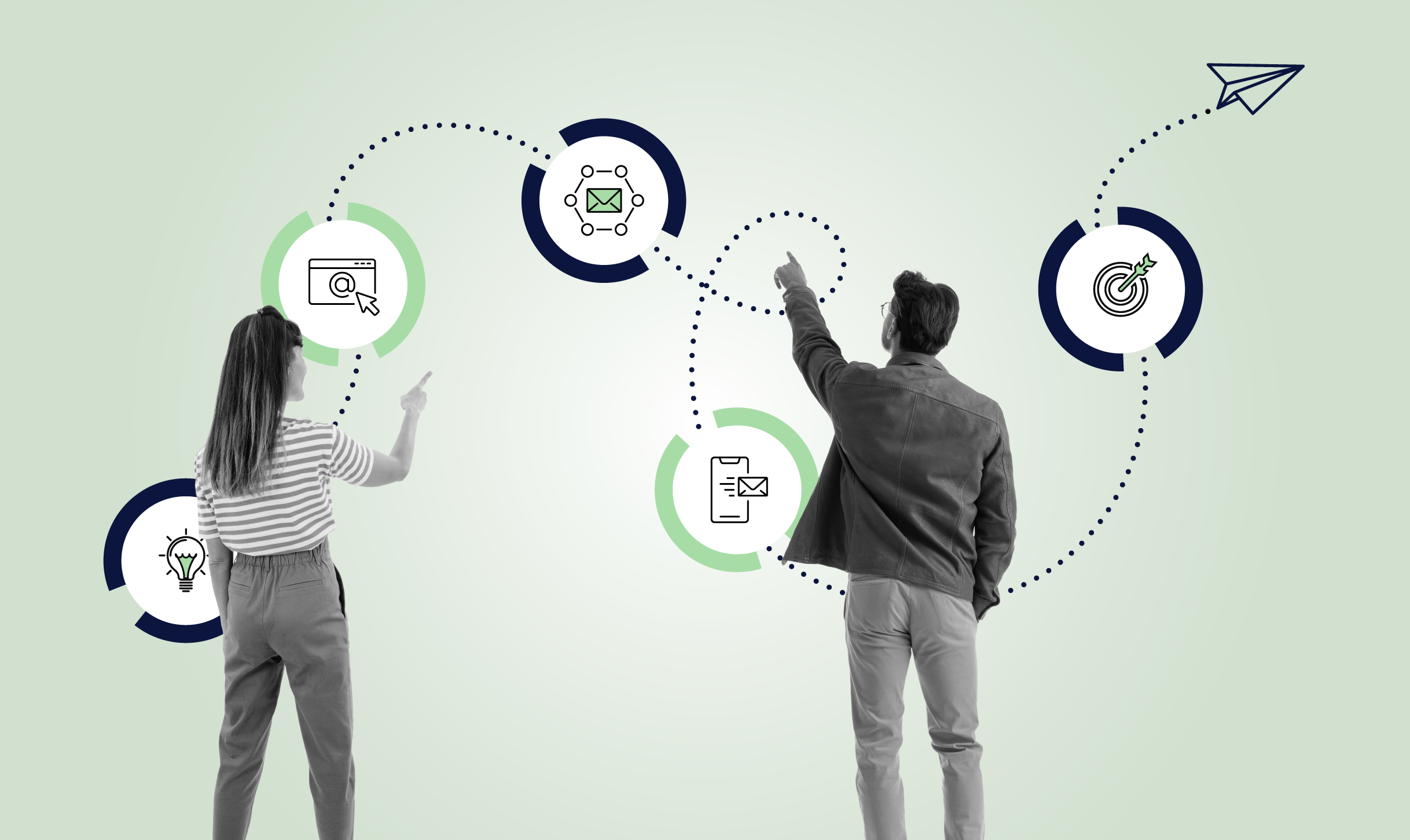7 Marketing Automation Workflows to Boost Growth in 2025

Key Takeaways
- Automation saves time & costs while improving customer experience.
- The right workflow helps you capture leads, nurture loyalty, and increase revenue.
- Success comes from smart strategy, measurement, and continuous optimization.
What Are Marketing Automation Workflows and Why They Matter
Marketing automation workflows are a simple formula: trigger → response. A customer does something and your system sends an automatic, helpful response.
Example: Someone abandons a cart on your eCommerce site. A workflow sends a friendly reminder with a discount code—revenue recovered.
Why this matters in 2025
- Efficiency: Adoption keeps rising with businesses seeing meaningful cost savings (HubSpot & Gartner trends).
- Better CX: Personalized workflows improve engagement and retention (Salesforce insights).
- Scalability: Automate the repetitive tasks so your team can focus on growth.
7 Marketing Automation Workflows You Need in Your Arsenal
Below are seven proven workflows that help businesses grow, plus benefits and how they work.
1) Lead Nurturing Workflow
What it’s used for: A series of automated communications that guide prospects from awareness to decision.
Why use it?
- Re-engage leads that have turned cold
- Improve sales conversions by rebuilding interest
- Save your sales team from manual follow-ups
How it works:
- Trigger: User downloads gated content (eBook/whitepaper)
- Response: Automated welcome email
- Drip: Over 1–2 weeks, send valuable content to build trust
Pro tip: Don’t show all your cards upfront. Lead with education; pitch later.
2) Abandoned Cart Workflow
What it’s used for: Recover revenue when customers leave items in their cart.
Why use it?
- Increase revenue by recovering lost sales
- Build trust with helpful reminders
How it works:
- Trigger: Customer leaves items in cart
- Response: Automated email reminder of the items
- Drip: Follow up with a timed discount; finish with a final nudge
Pro tip: Keep reminders short and visual, show the exact items.
3) Gated Content Workflow
What it’s used for: Capture leads by offering valuable content (eBooks, podcasts, reports) in exchange for contact info.
Why use it?
- Build trust by providing educational value
- Grow your email list and qualify leads
How it works:
- Trigger: A user shares contact info to access content
- Response: Automated email delivers the asset
Pro tip: Keep delivering helpful resources, don’t stop at the first download.
4) Customer Onboarding Workflow
What it’s used for: Welcome and educate new customers so they succeed faster.
Why use it?
- Reduce churn
- Boost product/service adoption
- Increase satisfaction and loyalty
How it works:
- Trigger: New signup or first purchase
- Response: Welcome message with next steps
- Drip: Share setup guides, how-to videos, and pro tips
Pro tip: Ask for feedback early and make support easy to reach.
5) Upsell & Cross-Sell Workflow
What it’s used for: Suggest related or upgraded products after a purchase.
Why use it?
- Increase average order value
- Deepen customer relationships
How it works:
- Trigger: Purchase completed
- Response: Thank-you email with related recommendations
- Drip: Timed follow-ups with bundles or upgrade offers
Pro tip: Recommendations should feel natural, use purchase history and behavior.
6) Customer Feedback Workflow
What it’s used for: Automate surveys and feedback requests after key actions.
Why use it?
- Improve service quality
- Spot unhappy customers early and resolve issues
How it works:
- Trigger: Order completed or support ticket closed
- Response: Automated feedback request or quick survey
- Follow-up: Thank-you and/or connect them with support
Pro tip: Keep surveys simple, respect users’ time.
7) Re-Engagement (Win-Back) Workflow
What it’s used for: Revive inactive leads or customers.
Why use it?
- Reactivate dormant users
- Reduce list decay
How it works:
- Trigger: No engagement for 60–90 days
- Response: “We miss you” email with an incentive
- Sequence: Reminder, then a final “stay or go” message
Pro tip: A great subject line works wonders (“We miss you—here’s 20% off”).
Marketing Automation Tools
Top platforms in 2025 and who they’re best for:
| Tool | Best For | Price Point | Integrations |
|---|---|---|---|
| HubSpot | All-in-one CRM + automation | $$$ | Huge ecosystem |
| Eloqua | Enterprise B2B | $$$$ | Oracle suite |
| Braze | Mobile-first personalization | $$$ | Strong API |
| Mailchimp | SMBs, newsletters | $–$$ | Easy plugins |
| Klaviyo | E-commerce | $$ | Shopify, WooCommerce |
| Salesforce | Large enterprises | $$$$ | Extensive integrations |
| Marketo | Mid-to-large B2B | $$$$ | Adobe stack |
| ActiveCampaign | SMB automation + CRM | $$ | Flexible integrations |
For a deeper comparison, see our Eloqua vs HubSpot vs Braze guide.
Measuring the ROI of Your Workflows
Automations are only as good as the results they produce. Track these KPIs:
- Click-through rate (CTR): Are people engaging with your messages?
- Conversion rate: Are leads turning into customers?
- Revenue lift: How much revenue do workflows drive?
- Attribution: Use multi-touch tracking for the full customer journey.
Example: An abandoned cart workflow might recover 15% of lost carts; a re-engagement campaign could win back 10% of inactive users.
How Portage Labs Can Help
We design smart, scalable marketing automation workflows that drive growth. Whether you’re just getting started or scaling enterprise-level programs, we can help.
FAQs
What are examples of marketing automation workflows?
Lead nurturing, onboarding, abandoned cart reminders, upselling, customer feedback, and more—each designed for a specific goal.
How are automated workflows created?
Start with a trigger (customer action), define the response (email, alert, task), and set the timing and conditions.
How do I measure ROI from marketing automation?
Track engagement (CTR), conversion rate, revenue lift, and use attribution to understand what’s working.
Which tools are recommended for small vs. enterprise businesses?
Small: Mailchimp, ActiveCampaign, Klaviyo.
Enterprise: HubSpot, Eloqua, Salesforce, Marketo.
Can marketing automation work beyond email?
Yes—cover SMS, push notifications, social ads, and even direct mail.


